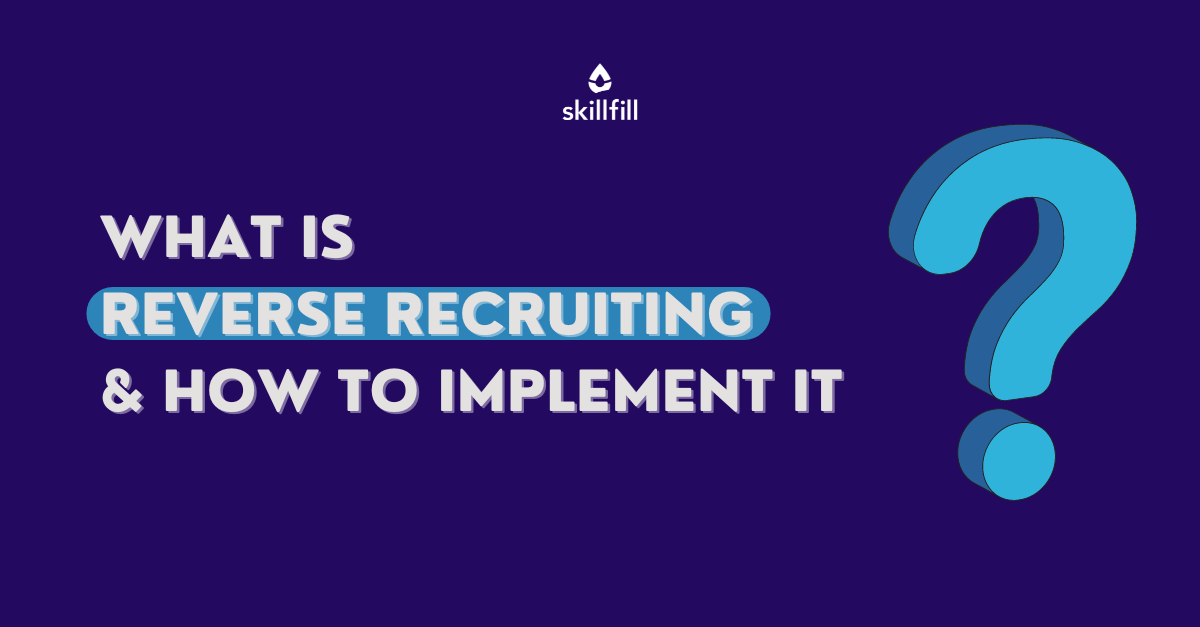Rethinking Recruitment: Leveraging Reverse Recruiting for Competitive Advantage
Rethinking Recruitment: Leveraging Reverse Recruiting for Competitive Advantage
Blog Article
Raise Your Hiring Game With Strategic Reverse Recruiting Approaches
As the landscape of hiring develops, organizations are increasingly transforming to cutting-edge methods such as calculated reverse recruiting to gain a competitive side in securing top ability. This shift in frame of mind needs a thoughtful reconsideration of how business come close to the hiring process, focusing on bring in easy candidates instead than exclusively depending on active work hunters - reverse recruiting.
Comprehending Tactical Reverse Hiring
Strategically leveraging the concept of reverse recruiting can substantially improve your organization's talent purchase method. By flipping the standard employment strategy on its head, reverse recruiting entails proactively seeking and bring in passive candidates who might not be actively seeking new possibilities. This proactive method enables business to use a pool of top notch skill that may not come with typical job postings alone.
Recognizing the complexities of tactical reverse recruiting is vital for its successful implementation. It needs a deep understanding of the sector landscape, competitor evaluation, and the certain capability that are in high need. reverse recruiting. By conducting extensive study and leveraging market insights, organizations can recognize and engage with top skill in a much more tailored and targeted manner

Advantages of Reverse Recruiting
Reverse recruiting offers a distinct technique to ability procurement by proactively engaging with passive candidates who may not be actively seeking task chances. One of the vital advantages of reverse recruiting is the capacity to target prospects that are currently used and pleased in their current roles.

Key Parts of Reverse Recruiting
Having actually discovered the advantages of reverse recruiting in targeting top performers who are material in their present duties, it is essential to comprehend the crucial parts that make this strategy successful in attracting passive candidates. Passive candidates are typically not proactively looking for brand-new chances, so having a favorable online reputation as an employer can stimulate their rate of interest.
One more vital part is individualized outreach. Given that easy prospects are not proactively trying to find tasks, generic recruitment messages are likely to be overlooked. Tailoring outreach initiatives to highlight just how the details abilities and experiences of the prospect line up with the business's requirements can substantially boost the possibilities of getting their attention.
In addition, cultivating partnerships with easy candidates over time is vital. Frequently engaging with them via networking occasions, market seminars, or even occasional check-ins can aid develop connection and count on, making them much more receptive to possible task chances in the future. By incorporating these vital elements into reverse recruiting strategies, companies can successfully draw in and hire leading skill from the pool of passive prospects.
Carrying Out Reverse Recruiting Techniques

Furthermore, developing compelling employer branding and showcasing a positive firm culture can aid attract passive prospects and encourage them to consider brand-new job chances. Developing a skill neighborhood or talent pipeline can additionally be useful in nurturing partnerships with passive prospects gradually, keeping them involved and interested in possible future functions within the organization. Generally, applying reverse recruiting strategies needs a positive and individualized approach to talent acquisition, concentrating on developing significant links with easy candidates to drive long-term recruitment success.
Measuring Success in Reverse Recruiting
One crucial metric is the top quality of prospects engaged through reverse recruiting networks. By gauging the conversion rate of passive prospects right into active candidates or employs, their explanation organizations can gauge the performance of their reverse recruiting efforts.
Furthermore, tracking the time-to-fill metric for placements filled up through reverse recruiting can offer beneficial data on the efficiency of the procedure. A shorter time-to-fill shows that the method is attracting certified candidates promptly. Keeping an eye on retention rates amongst candidates hired through reverse techniques can provide understandings into the long-lasting success of the approach. High retention prices suggest that the prospects sourced via reverse recruiting are a great suitable for the organization, adding positively to its general ability pool. By assessing these essential metrics, organizations can effectively determine the success of their reverse recruiting initiatives and make notified choices to optimize their skill procurement techniques.
Final Thought
Finally, strategic reverse recruiting offers a special strategy to hiring that focuses on drawing in leading talent with positive site link involvement and relationship-building. By leveraging this approach, companies can gain an one-upmanship in the talent market and improve their recruitment results. It is necessary to recognize the advantages, vital parts, and strategies of reverse recruiting to effectively implement and measure success in this innovative method to hiring.
Report this page